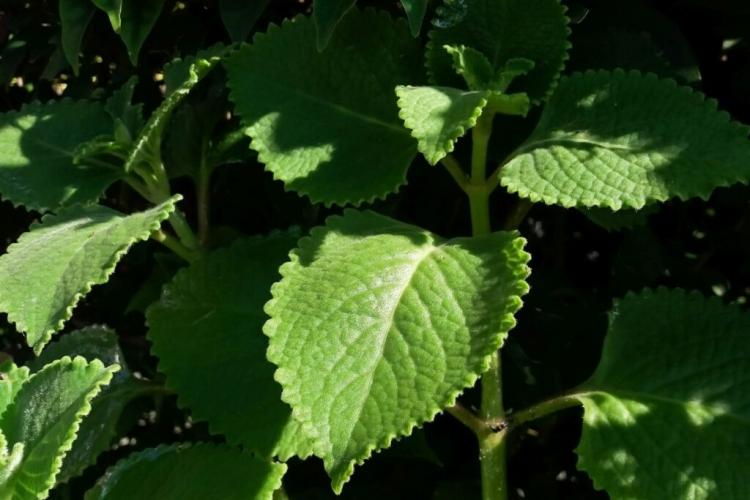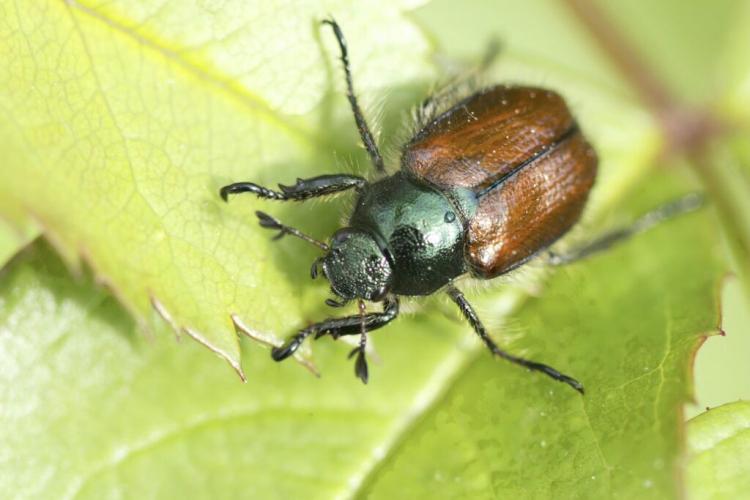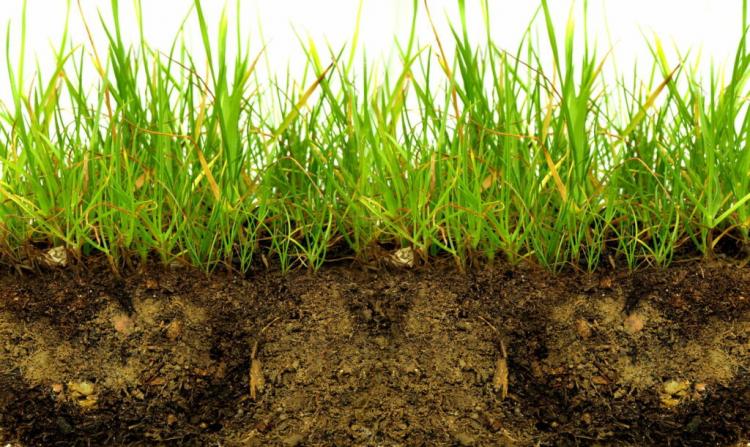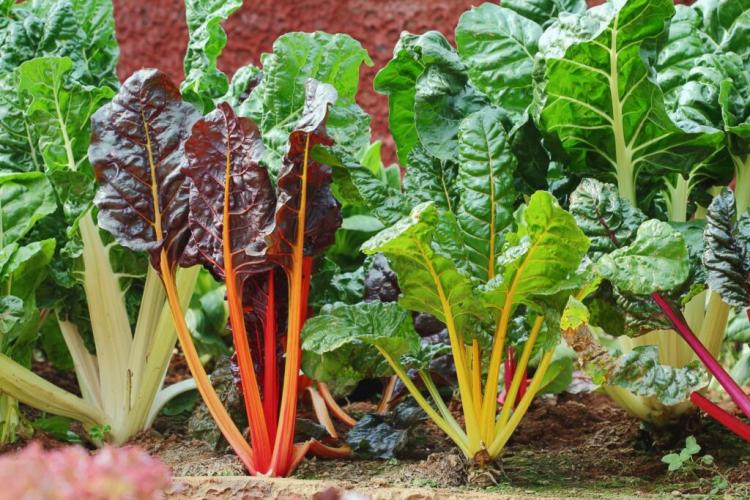Hibiscus hedge: tips on choosing a variety, planting & care
A great privacy screen can be achieved very easily with hibiscus. We give tips on suitable varieties and the correct pruning of a hibiscus hedge.
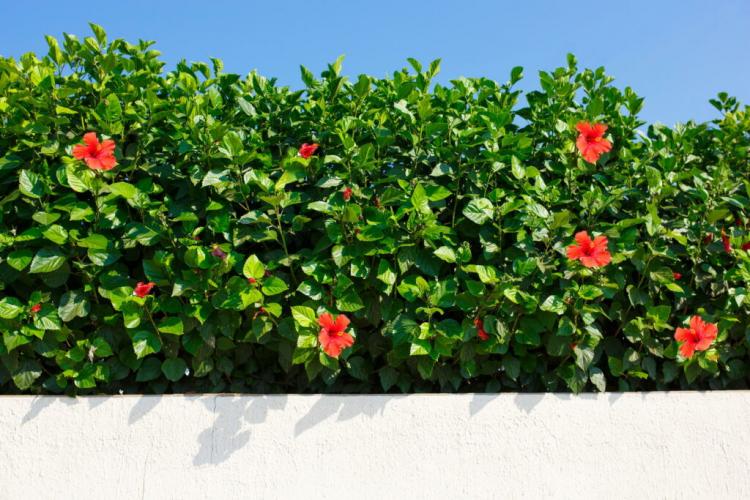
A hibiscus hedge brings a true splendor of flowers to the garden [Photo: YanaKotina / Shutterstock.com]
Hibiscus ( Hibiscus ) blooms in the most beautiful colors from June. Whether blue, white or pink – the variety of hibiscus is large and some varieties are even suitable for creating a hedge. Hibiscus hedges not only bring a colorful variety of colors into your garden, they also provide good privacy protection. So that a hibiscus hedge will soon decorate your garden, you only have to consider a few tricks. In this article you will find out which varieties are suitable for a hedge, how to create and care for a hibiscus hedge.
The hibiscus hedge: an overview
Table of Contents
Hedges in the garden don’t always have to be green. The hibiscus provides the best evidence to the contrary: With its brightly colored flowers, it brings color to our gardens and, as a hedge, also provides a habitat for many insects and birds. The hibiscus, originating from Asia – in German marshmallow – belongs to the mallow family (Malvaceae). Hibiscus plants are fast-growing and, with their dense foliage, provide optimal protection from unwanted looks. In addition, the low demands of the hibiscus and its high cut tolerance make it the ideal hedge plant.
Hibiscus hedge: suitable varieties
The variety of hibiscus is great. But not all hibiscus species are good for a hedge. Since the hibiscus hedge survives in the open all year round, the hibiscus variety must definitely be frost-resistant for a hedge. The garden marshmallow ( Hibiscus syriacus ), for example, is particularly suitable for a hibiscus hedge. But varieties of almond marshmallow ( Hibiscus mutabilis) can also be used for a hedge. Both species can grow up to two meters tall and are very easy on cutting. In the following we have put together some hardy varieties that are particularly suitable for a hibiscus hedge.
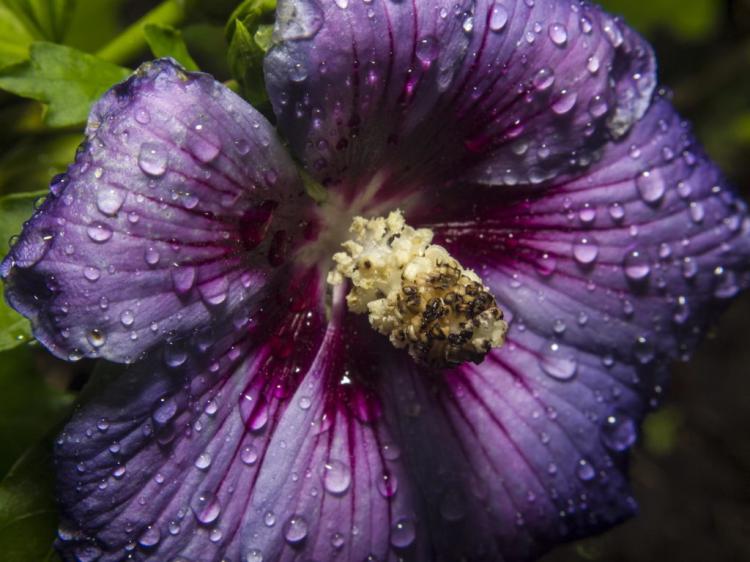
Winter hardy varieties of hibiscus are perfect for a hedge [Photo: Bildagentur Zoonar GmbH / Shutterstock.com]
Varieties of garden hibiscus for a hedge:
- ‘Blue Bird’: This variety bears large blue flowers early in the year. It is vigorous and particularly hardy.
- ‘Duc de Brabant’: This hibiscus variety grows tall, bushy and can reach heights of up to three meters. The funnel-shaped flowers shade from dark red to blue-red and bloom from July to October.
- ‘Russian Violett’ : The ‘Russian Violett’ variety is also very vigorous. The flowers are pink to reddish-purple. Flowering time is from July to the beginning of October.
Varieties of almond hibiscus for a hedge:
- ‘Shanghai Pink’ : This is a robust variety with rich flowers ranging from pink to dark pink. The hibiscus is hardy down to -15 ° C.
- ‘Double’ : This variety is vigorous and bushy. The flower color changes from white to pink to red.
A comprehensive overview of the rich variety of hibiscus can be found here.
You May Also Like Flowers For Hedges
Plant hibiscus hedge
Hibiscus hedges, like hibiscus specimen plants, prefer a sunny to partially shaded location protected from the wind. Hibiscus hedges prefer to grow on well-drained and nutrient-rich soil. A nutrient-poor soil can be enriched with humus-containing potting soil or compost. The optimal planting time is in spring, as soon as no more frost is expected (a good guideline is the ice saints in mid-May).
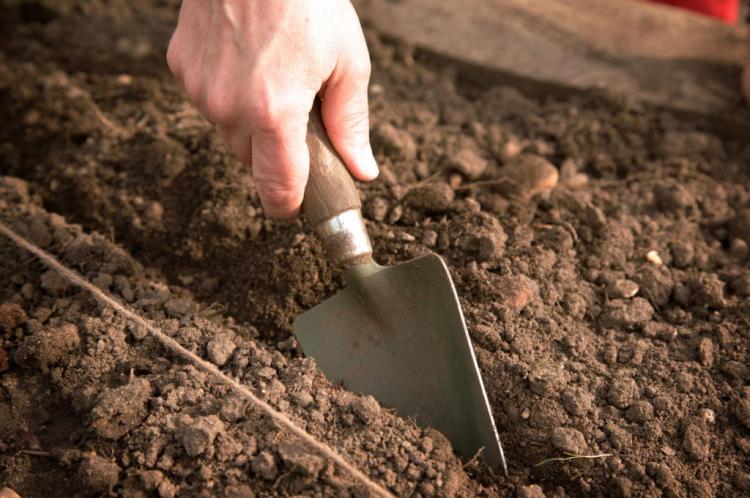
To plant the hibiscus hedge, the planned course is marked with a string [Photo: domturner / Shutterstock.com]
It is best to mark the course of the planned hedge with a string before planting. The planting distance between the plants should be 60 centimeters so that your hedge is nice and tight. You can either dig a separate planting hole for each plant or dig a trench about 50 centimeters deep along the entire length of the hedge. Then the plants are planted and watered well.
Summary of planting hibiscus hedges:
- Location: Sunny and sheltered from the wind
- Substrate: Well drained and nutritious
- Plant spacing: 60 cm
- Planting depth: 50 cm
Tip: Don’t use just one variety or color for your hedge. Planting different types of hibiscus can create a colorful play of colors in your garden that is guaranteed to attract everyone’s attention.
You can find detailed instructions for planting and propagating hibiscus here.
Maintain a hibiscus hedge
Even though hibiscus hedges are considered easy to care for, you shouldn’t neglect yours and maintain them regularly. The main part of caring for hibiscus is watering. It is best to keep freshly created hibiscus hedges constantly moist for two weeks. If the hibiscus is too dry, it reacts quickly by shedding its leaves. Leaves hanging at the latest should be taken as a sign to water quickly and thus protect your hibiscus hedge from drying out.

Our Plantura organic flower fertilizer optimally cares for your hibiscus hedge and also promotes soil life
In spring you can regularly strengthen your hedge with fertilizer. An organic fertilizer slowly releases the nutrients to the plants and supports healthy soil life. For hibiscus hedges, for example, our Plantura organic flower fertilizer with an organic long-term effect, which mainly consists of plant-based raw materials, is suitable. If you discover signs of disease or pests, it is better to remove the affected parts of the plant immediately. This prevents diseases or pests from spreading to the entire hedge.
Maintaining hibiscus hedges:
- Keep moist continuously after planting
- Then water regularly
- Fertilize in spring
- Remove sick / infected parts of the plant immediately
You can find out what else to look out for when caring for hibiscus in our special article.
Cut the hibiscus hedge
The vigorous growth of your hibiscus hedge means that it will need to be pruned annually. This shape cut requires compact growth and promotes flowering. The ideal time to cut your hibiscus hedge is in spring, before the leaves have sprouted. Cut back your hedge by a third. Frozen and damaged branches can also be cut off. Sick or pest-infested branches and dead shoots should be removed all year round.
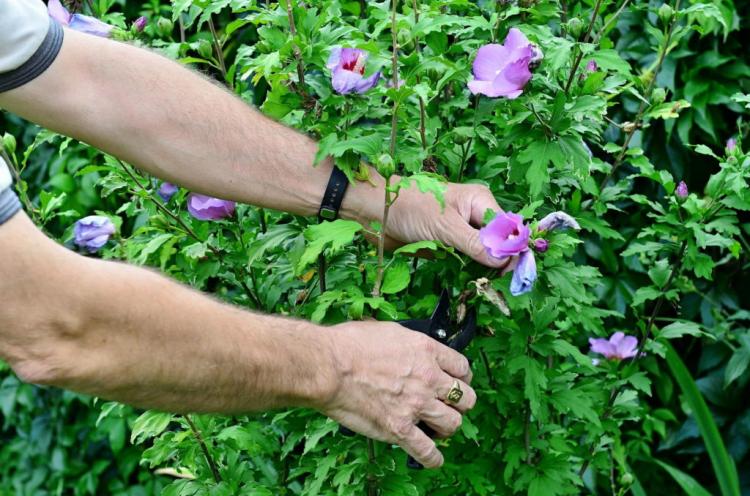
Annual pruning is part of maintaining the hibiscus [Photo: NagyG / Shutterstock.com]
Trimming hibiscus hedges in summary:
- Shorten by a third in spring
- The flowers develop on annual shoots
- Remove sick and dead shoots all year round
You can find detailed instructions on how to cut your hibiscus here.
More exciting plants that are also very suitable for a flowering hedge can be found here in our article on plants as privacy screens.

